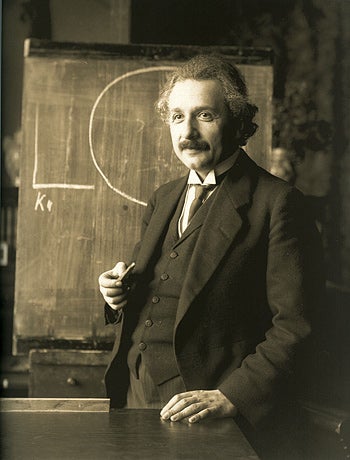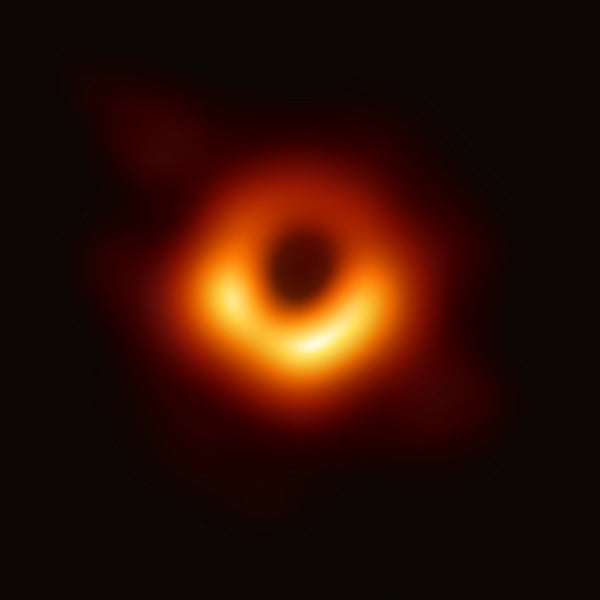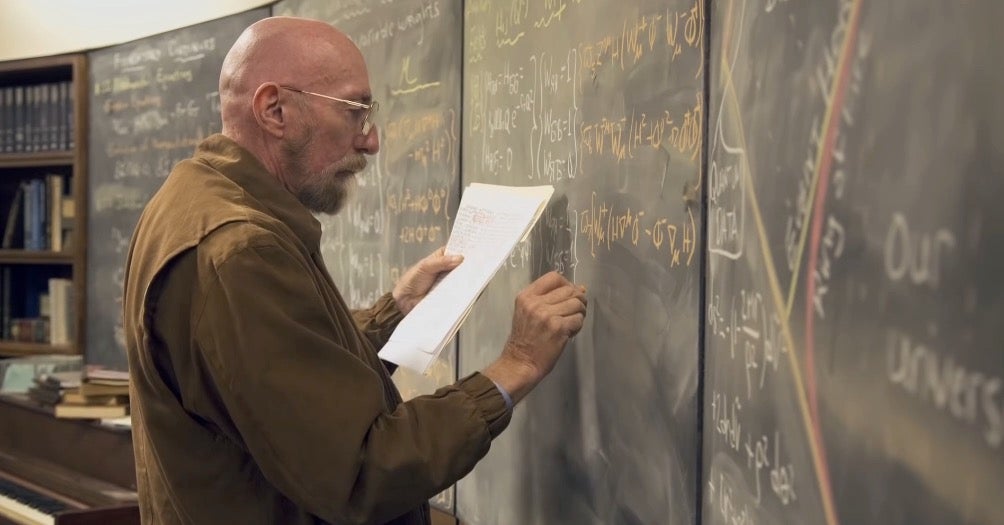
In the past quarter century, astronomical observations have led to discoveries that have literally transformed our conception of the universe.
One such transformation occurred in 1998, when dark energy — a mysterious force thought to be driving the accelerated expansion of the cosmos — was discovered. Researchers measured that acceleration through observations made by observatories including the Hubble Space Telescope of roughly 50 type Ia supernovae, the explosions of white dwarfs, which always occur under the same conditions and thus always have the same brightness, regardless of distance. What astronomers saw was that more distant supernovae of this kind appeared dimmer than expected, indicating they were farther away than they should be — and hence, the universe’s expansion is accelerating. Astronomers have subsequently determined that dark energy is the main thing there is, comprising about 70 percent of the universe’s total mass-energy content.
Another transformation in our view of the universe: In 2015, gravitational waves produced by the violent collision of two distant black holes were intercepted for the first time by the LIGO Observatory’s twin detectors in Louisiana and Washington. Each of these L-shaped instruments has arms 2.5 miles (4 kilometers) long, with mirrors on each end. They are sensitive enough to perceive minute variations in distance between those mirrors of just 1/10,000 the width of a proton.
And in 2019, the Event Horizon Telescope — a coordinated network of radio telescopes spread across the globe — released an image of the silhouette of a giant black hole (with a mass of 6.5 billion Suns), located in the middle of the M87 galaxy 55 million light-years away.

Through the lens of mathematics
These were all incredible accomplishments, the products of tremendous ingenuity and mind-blowing technology, which allowed measurements of unparalleled precision. Spectacular as these achievements were, there is another way to learn about the universe that has, in many instances, been equally potent. This approach does not require billion-dollar facilities or cutting-edge technical wizardry. In fact, it can often be carried out with a paper and pencil and, sometimes, not even that, as a portion of this work can be carried out by pure thought.

The magical tool we’re referring to here is mathematics — a subject taught to children as young as those in kindergarten and even preschool. Many of us are familiar with arithmetic, algebra, geometry, and perhaps even calculus, yet may not appreciate the broad sweep and power of mathematics.
Let’s consider the three discoveries discussed above, starting with dark energy. In November 1915, Albert Einstein presented equations for his new theory of gravity, called general relativity. In 1917, he published work applying this idea not only to the motions of planets around the sun, but to the universe as a whole – a notion that contributed immensely to the field of cosmology. But for his equations to make reflect the current state of the universe, Einstein needed to insert an additional term representing a repulsive force, called lambda (λ), to keep the universe from collapsing in on itself due to gravity. For physicists and mathematicians who work with these equations today, lambda represents dark energy.
Although he was working some 81 years before the discovery of dark energy, Einstein’s additional term allowed scientists over the intervening years to mathematically experiment with a range of possible universes — universes that expand or contract, alternate between the two, or just stay the same (the option that Einstein originally subscribed to). In the 1920s, astronomers including Edwin Hubble secured evidence that our universe was indeed expanding. And by the late 1990s, a new generation of investigators had revealed that this expansion is getting faster and faster.
Gravitational waves were also predicted by Einstein, who did so in 1916, based on the equations of general relativity he’d formulated a year earlier. However, he doubted that such waves could actually be detected. In work carried out in the 1950s and 60s, mathematician Yvonne Choquet-Bruhat proved that Einstein’s equations can give rise to gravitational waves and that such waves travel at a finite speed — the speed of light. Some of Choquet-Bruhat’s ideas were later used to figure out what a gravitational-wave signal would look like — knowledge that contributed to their successful detection, which was announced in 2016 after a year of careful vetting, 100 years after Einstein’s initial prediction.
You may be sensing a trend here, and black holes don’t buck it. Although they had been first described in 1793, it wasn’t until a couple of months after the publication of Einstein’s 1915 paper introducing the equations of general relativity that physicist Karl Schwarzschild found a mathematical solution that showed what space (or actually space-time, the four-dimensional fabric of the universe) would look like both outside and inside a non-rotating spherical star. Schwarzschild showed that if enough mass were packed into a small enough radius, the density and pressure at the star’s center would approach infinity. He had described, at least on paper, an object that 52 years later would come to be called a black hole.

In 1963, mathematician Roy Kerr solved the Einstein equations for rotating black holes — the kind of black holes that occur in nature, a no celestial bodies that we know of are completely motionless. Two years later, mathematician Roger Penrose demonstrated, through an argument based on geometry and the related field of topology, the conditions that give rise to singularities — places such as the centers of black holes, where conditions are so extreme that known laws of physics break down.
Seeing is believing, as the saying goes, and in 2019, scientists released the first picture of a black hole’s immediate exterior, a finding that silenced most of the remaining skeptics. Astronomers today study black holes across the universe, while mathematicians are gaining further insights about these enigmatic entities. Researchers have shown, for instance, that it’s theoretically possible for black holes to exist in higher dimensions than the four of our familiar space-time, as well as have bizarre, exotic shapes. Two mathematicians have recently proven that so-called “extremal” black holes, which have the maximum spin or maximum charge allowable and do not give off Hawking radiation, can exist in nature despite a law developed 60 years ago by physicists John Bardeen, Brandon Carter, and Stephen Hawking that ruled them out. This speaks to the fact that laws in physics can be overturned, whereas rigorously proven mathematical theorems can last forever.
It’s probably worth ending on a few words about the equations at the heart of all this. The gravitational theory Einstein put forth 109 years ago was truly revolutionary, putting forth a concept of the universe wholly different from the one it supplanted. According to Einstein’s theory, gravity was not an attractive force conveyed through some unknown mechanism between massive objects, as imagined by Isaac Newton in the late 1600s. Instead, massive objects like the Sun, Einstein said, curve space-time around them, and it is this curvature that keeps smaller objects (say, our solar system’s planets) within their gravitational sway. The curvature of a surface defines its precise shape or geometry. Einstein used that concept to show that the force we call gravity — a phenomenon that sculpts the universe on the largest scales — is actually a consequence of geometry. Expressed more simply, one might say that gravity is geometry.
That statement alone should provide some indication as to the influence and scope of mathematics. Math is far more than just the language of the physical world, as is often said. Rather than using math to describe the physical world, we’re coming to realize that the physical world, at its core, is fundamentally mathematical.
As to why that’s the case, we may never know. But it’s a mystery that will not dissuade mathematicians from pursuing their craft and uncovering more secrets along the way.
Steve Nadis (a former Astronomy contributing editor) and Shing-Tung Yau (a professor of mathematics at Tsinghua University and an emeritus professor at Harvard University) are coauthors of The Gravity of Math: How Geometry Rules the Universe (Basic Books, 2024).









